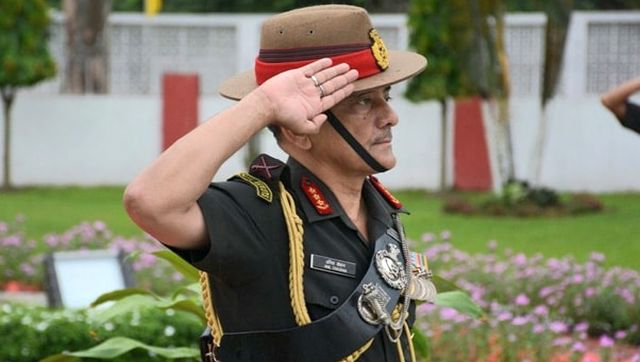India’s Armed Forces on Wednesday got a new Chief of Defence Staff (CDS)
Lt General Anil Chauhan (retired), nine months after former
CDS General Bipin Rawat passed away in a helicopter crash in Tamil Nadu. The Defence Ministry statement read, “Govt of India appoints Lt General Anil Chauhan (Retired) as the next Chief of Defence Staff (CDS) who will also function as Secretary to Government of India, Department of Military Affairs.” Born in 1961, Lt General Chauhan was commissioned into the 11 Gorkha Rifles of the Indian Army in 1981. Since then, he has served for nearly 40 years holding several instrumental posts and gathering extensive experience in counter-insurgency operations in Jammu and Kashmir and northeast India.
**Also read: Explained: Why Lt General Anil Chauhan is a good pick for the role of India’s CDS** When he retired in May 2021, the three-star officer was the General Officer Commanding-in-chief of the Eastern Command, a post that he was appointed to in 2019. The appointment of Lt Gen Anil Chauhan as CDS would be a proud moment for his regiment — the 11 Gorkha Rifles. Incidentally, the previous CDS, General Bipin Rawat, was also from the 11 Gorkha Rifles. Here’s a closer look at this regiment, which now given the Indian Armed Forces both its senior-most officer. All about the 11 Gorkha Rifles The 11 Gorkha Rifles is a Gorkha regiment of the Indian Army. The regiment consists of primarily the Kirant tribes Rai, Limbu, Yakkha, Sunuwar of Eastern Nepal, Darjeeling, Kalimpong, Dooars of West Bengal, Sikkim and other parts of Northeast India. The history of the 11 Gorkha Rifles dates back to the year 1918. It was then raised as an ad-hoc unit with troops and officers being drawn from the various Gorkha regiments. The four battalions saw service in both Palestine and Mesopotamia at the end of the World War I, as well as during the Third Afghan War in 1919. It was then disbanded in 1922 and the personnel returned to their parent units. The 11 Gorkha Rifles was re-raised post-Independence through a tripartite agreement between the governments of India, Nepal and Britain. The soldiers of four regiments — 2nd, 6th, 7th and 10th Gorkha Rifles were transferred to the British Army. Transfer of troops to the British Army was to be on a purely voluntary basis. A referendum was held in the presence of the representatives of the Indian and Nepalese governments. Troops from the 7th and 10th Gorkha Rifles opted against the transfer to the British Army in large numbers. On 1 January 1948, the 11 Gorkha Rifles was officially re-raised at Himachal Pradesh’s Palampur. The regimental centre was subsequently shifted to Jalapahar in Darjeeling, and then moved to Clement Town, Dehradun for a brief period. Today, the regimental centre is in Lucknow. [caption id=“attachment_11355671” align=“alignnone” width=“640”] The 11 Gorkha Rifles is one of the most decorated regiments in the Indian Army. PTI[/caption] Participation in operations The 11 Gorkha Rifles has the proud privilege of having most of its battalions participate in practically all the operations undertaken by the Indian Army since independence. They have taken part in the Hyderabad operation and Jammu and Kashmir ops in 1948, the Indo-Pak war of 1965 and 1971. The men of 1/11 Gorkha Rifles displayed courage and played an important role during the Kargil War. The 1/11 Gorkhas were entrusted with the task of reclaiming the captured Indian positions from the Pakistani Army. In fact, they were one of the first units to be moved into the Batalik sector for the Kargil War. Their brut courage got the unit the title ‘Bravest of the Brave’. This was in addition to various citation, battle and theatre honours. All battalions of the regiment have been deployed for counter-insurgency operations in North East at some stage or the other. 1/11 Gorkhas was awarded the Chief Of Army Staff’s unit citation for excellent performance during Operations Bajrang and Rhino in Assam in the early 1990s. Honours for 11 Gorkhas The regiment has earned many accolades and awards during the years for their dedication and valour. During the 1971 Bangladesh War, the regiment won the Battle Honour ‘Shingo River Valley’. Multiple other Battle and Theatre Honours have been conferred upon this regiment. The regiment also earned multiple bravery awards. Captain Manoj Kumar Pandey, belonging to 1/11 Gorkha Rifles, was awarded the Param Vir Chakra posthumously for displaying spontaneous valour during the Kargil War. In addition to the Param Vir Chakra, the 11 Gorkhas also has four Ashok Chakras to their credit. Besides that, it has won one Padma Bhushan, 12 Param Vishisht Seva medals, two Maha Vir Chakras, three Kirti Chakras, 16 Ati Vishisht Seva medals, 14 Vir Chakras, 13 Shaurya Chakras, 82 Sena medals and more. With inputs from agencies Read all the Latest News , Trending News , Cricket News , Bollywood News , India News and Entertainment News here. Follow us on
Facebook,
Twitter and
Instagram.
Lt General Anil Chauhan and his predecessor Late General Bipin Rawat both come from the 11 Gorkha Rifles. Called ‘Bravest of the Brave’, this regiment has played a significant role in the 1971 Bangladesh War and the 1999 Kargil War
Advertisement
End of Article


)

)
)
)
)
)
)
)
)



